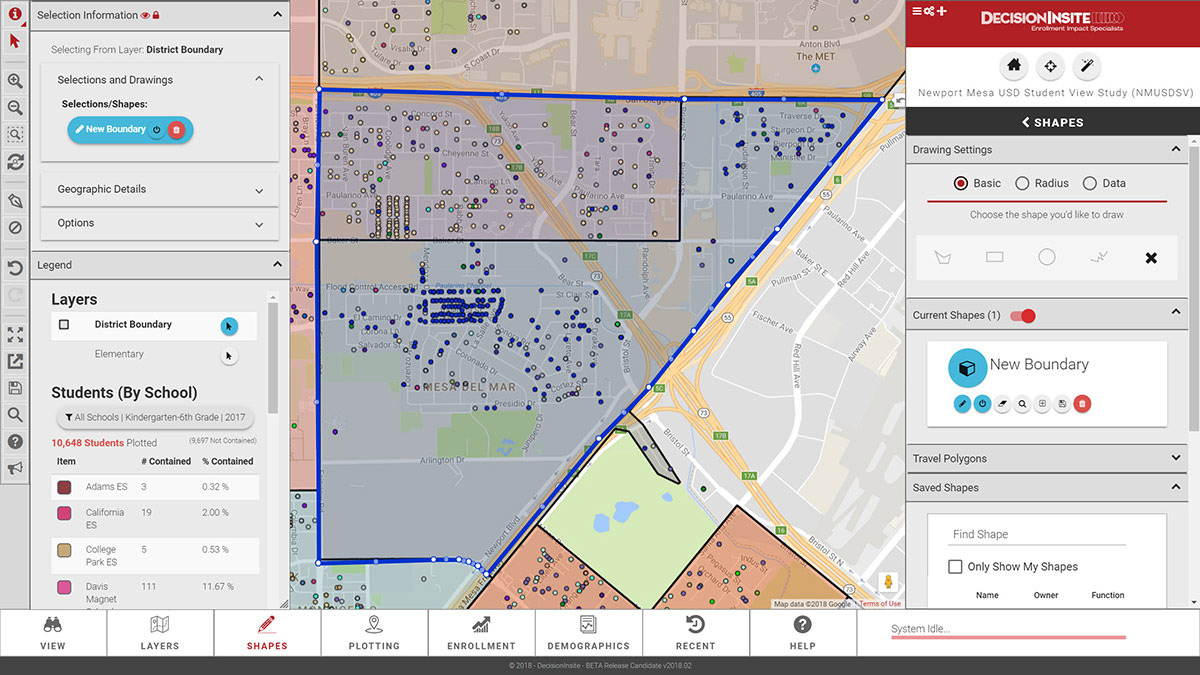Leading your District through a Successful Attendance Boundary Change Process
How using a unique fusion of technology, process and analytics can help leaders make informed, data-driven decisions.

The tales of contentious and ultimately unsuccessful attendance boundary change processes are enough to strike fear in the hearts of school district leaders everywhere. Yet, there are times when an attendance boundary change is the right thing to do.
Here are some tips based on our experience with a wide range of districts who have engaged us to assist with attendance boundary changes.
Define the Goals and the Design Criteria:
Reaching agreement on the goals and design criteria at the outset of the process can expedite the process and reduce unnecessary conflict. Often there is an overriding reason behind the need to adjust attendance boundaries, for example, a school closure, a new school, changing grade configurations, or the need to reduce student transportation costs. Once the goals are clear, being explicit about the design criteria for the adjusted boundaries comes next. Such factors might include: Minimizing the number of students affected by the change; aligning feeder school boundaries where possible; balancing racial/ethnic populations; making more efficient use of school capacities; maximizing neighborhood school attendance areas; using significant geographic features as boundary lines e.g., highways, rivers, etc.
Delineate the Process:
A thoughtful well-designed, well-publicized process can mitigate some of the political challenges that surround changing attendance boundaries. Depending on district practice, the process may be conducted primarily by staff, or may include extensive community participation.
Establish a Calendar:
The calendar is developed by working backwards from the targeted date of implementing the boundary change. Key events to consider include: How far in advance of implementation is Board approval desired? How much notice to families affected by a boundary change is desired? How many meetings, committee and/or staff, are anticipated for the consideration of various scenarios? How much time should be allowed at the beginning of the process for building the necessary information base, including enrollment projections and updated school capacities?
Depending on the answers to these questions, a process that begins 12 months prior to implementation is not uncommon. Factors affecting the length of the process include the complexity of the project and the process, the number of scenarios desired, the anticipated community reaction, and the volume of revisions or “tweaks” to various scenarios.
Update School Capacities:
In any boundary change work, practical school capacities play a central role to the viability of any boundary adjustment scenario. With rare exception, school capacities need be updated before a boundary adjustment process can begin.
Consider a Consultant:
As district staffs have more on their plates than ever before, many districts choose to bring in outside firms or consultants to assist with boundary changes. At DecisionInsite, much of our boundary consulting work is now being accomplished remotely. Modern web-based meeting platforms, web-video and telephonic conferencing can provide for high quality interactions that are more time and cost efficient.
DecisionInsite’s proprietary technology is web-based, meaning that users can access it anytime, anywhere. Proprietary technology and tools mean that scenarios can be created quickly with much less effort than ever before. Mapping technology solutions, such as DecisionInsite’s StudentView System, can not only paint a picture of a new scenario, but can also generate in moments relevant data associated with it. The ability to see the locational relationship and comparative demographic data among the boundaries help expedite the process from goal to analysis to decision-making.

Advertorial